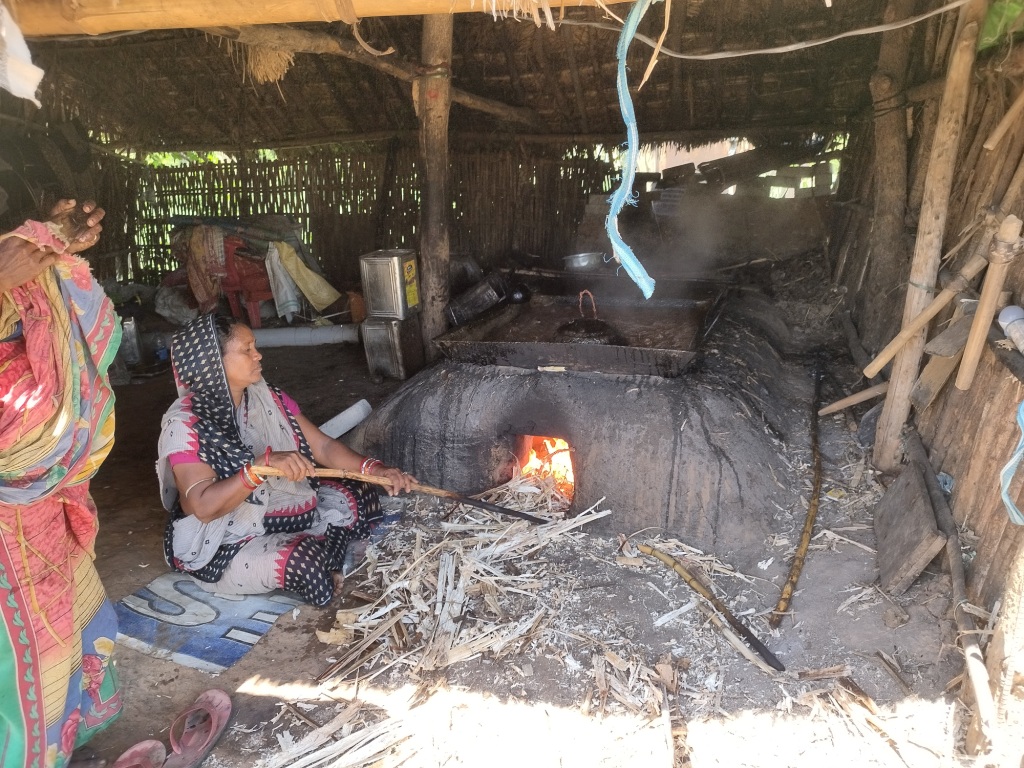Nayagarh: Demand for jaggery produced in Nayagarh district in traditional methods is rising day by day as the sugarcane here has a higher sucrose (sweetness) percentage and is more fibrous than the crops produced in other parts of the country and the state, a report said. However, a lack of government sponsorship, price fixation and the closure of Nayagarh Sugar Mill has hit sugarcane cultivation and the preparation of jaggery in the district.
Nevertheless, some farmers are still into sugarcane cultivation and continue producing jaggery using traditional methods without the use of chemicals. This gives it its unique taste and flavour and has made it a much sought-after sweetener in various households. Despite a slump in sugarcane cultivation, the demand for jaggery among people instead of sugar has increased due to its use in the preparation of cakes and various eatables. The molasses produced in Nayagarh is not confined within its limits but has crossed its boundaries and is now being sold in Dhenkanal, Angul, Cuttack, Bhubaneswar and Ganjam and other states.
Meanwhile, the sugarcane research centre at Panipoila in Nayagarh has initiated a move to get a GI tag for the molasses produced in the district, which if achieved will certainly give a big boost to sugarcane cultivation and jagerry production in the district. A farmer Duryodhan Pradhan of Nua Kantabania village under Balugaon panchayat of Nayagarh block said he has been in sugarcane cultivation since he was only 6. He and his elder brother used to assist their father in the cultivation and produce jaggery out of it. He, with the help of his elder brother, has been independently cultivating sugarcane for the last 35 years. He admitted that the cultivation has declined since the closure of the sugar mill.
However, that has failed to deter him, as every year he cultivates sugarcane on 5 acre of land and earns a minimum of Rs 2 lakh from the production of molasses. He lamented that lack of price fixation has hit the jaggery business as traders buy it at Rs 33 per kg from him and sell it at a much higher price in Dhenkanal, Angul, Talcher, Bhubaneswar and Cuttack towns. A kilogram of molasses is even sold at Rs 45 per kg in the village, he added.
Another far mer, Gulubas Pradhan of Similisahi village under Nuagaon block, said he is farming when he was only 6 years old and has spent over 60 years in the farming on his one acre of land. He also expressed his displeasure over the lack of price fixation. A farmer, Pramod Kumar Kunda of Panipoila, said that the sugarcane cultivated in Nayagarh is much better in quality produced in other district and states. Around one tonne of sugarcane, when crushed in a sugar mill produces 1.5 quintal of sugar, while sugarcane produced in other districts gives only 85 kg. The cultivation is undertaken mostly in Nayagarh, Ranpur, Odagaon, and Nuagaon blocks.
Sources said the climate and soil of Nayagarh being conducive to sugarcane crops, farmers used to cultivate it on large tracts of land and prepare jaggery from it in traditional methods. Traders from different parts of the state and outside flocked to Nayagarh to take truckloads of ‘gur’ and molasses in earthen pots. A farmer, Ranjit Dalabehera said, all those who are into jaggery production do not get any government assistance and the GI tag, when available, will help them benefit more from the business.
A trader of Barabati village said that the jaggery produced in Nayagarh is marketed under the name Maa Jaggery in other districts and sold at Rs 80 per kg. He said that he earns around Rs 2 lakh every year. Scientist Pramod Kumar Nayak of the sugarcane research centre said that efforts have been launched to obtain a GI tag for Nayagarh jaggery, which is indigenous to the district. Additional Chief District Agriculture Officer Lalatendu Mohapatra admitted that sugarcane cultivation has declined after the closure of the sugar mill. Over the years, the cultivation of the water-guzzling crop has come down from 6,000 hectares (ha) to less than 1,205 ha. It is now on the verge of extinction, he added.
